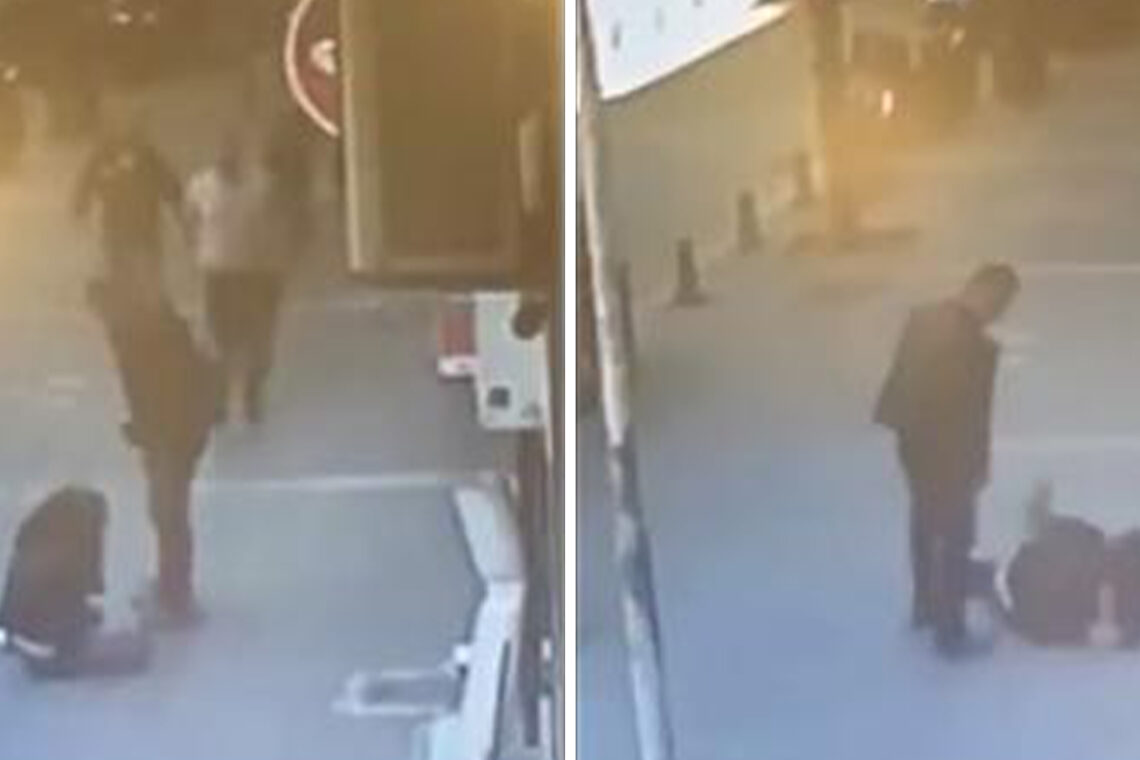
Violence is an unfortunate reality that permeates various aspects of life, and its manifestation in personal relationships is particularly troubling. The idea that someone could inflict physical harm on a partner who cares deeply for them is not only heartbreaking but also deeply troubling. While we often hear about such incidents, they remain a stark reminder of the darker facets of human interaction.
However, there are instances where these violent acts take place in full view of the public, leading to unexpected and dramatic interventions. A recent occurrence in Turkey highlights this unsettling reality. On a street in Istanbul, a man initiated a violent confrontation with his ex-wife shortly after they had attended a court hearing regarding their divorce. The public nature of this incident raised many questions about societal norms, the perception of violence, and the role of bystanders.
The confrontation, captured by surveillance cameras, reveals the escalation of an argument that soon spiraled into physical aggression. The footage shows the man using what appears to be rolled-up papers to strike his ex-wife. The scene is distressing, with the woman visibly distressed and crying out for help. Witnesses reported that she was screaming, which only underscores the gravity of the situation. Such public displays of violence are alarmingly common in various forms, but they remind us of the urgent need for intervention and support for victims.
Fortunately, in this instance, the abuse did not go unnoticed. Bystanders who happened to be nearby quickly realized the severity of the situation and responded without hesitation. One individual, described as an unlikely hero, intervened with remarkable courage. He executed a flying headbutt to incapacitate the abuser and subsequently pinned him to the ground. This act of bravery not only provided immediate relief to the victim but also exemplified how collective action can sometimes counteract individual acts of violence.
As the altercation unfolded, more witnesses gathered, and the involvement of the public quickly shifted the dynamic. The intervention of the bystander was not just a personal act of heroism but also a reflection of a societal obligation to protect those who cannot defend themselves. When the police arrived, they took the suspect into custody, highlighting the importance of law enforcement in addressing such incidents. This swift action by both the public and the authorities can serve as a deterrent for future occurrences of domestic violence.
In the aftermath of this event, the footage was shared widely on various platforms, sparking conversations about the nature of violence, the responsibilities of bystanders, and the appropriate ways to handle such situations. While some viewers celebrated the courage of the bystander, others reflected on the complexities of responding to violence. Many believe that while direct intervention can be effective, it is crucial to consider the potential risks involved. Nonetheless, this incident stands out as a testament to the power of community action and the impact that individuals can have in crisis situations.
This scenario raises important questions about what drives individuals to act in the face of violence. It challenges us to consider our own roles in such situations. Would we have the courage to step in? How do we balance the need to intervene with the potential dangers of escalating the situation? The ethical dilemmas surrounding intervention in violent encounters are complex and multifaceted.
Moreover, the emotional and psychological toll on the victim is profound. While the woman in this case was fortunate to receive immediate help, many victims of domestic violence face long-term effects that extend beyond the physical. The trauma associated with such experiences can leave deep emotional scars, affecting their mental health, sense of safety, and ability to trust others. It is vital for communities to provide not only immediate assistance during incidents of violence but also ongoing support for healing and recovery.
It is also essential to address the systemic issues that contribute to domestic violence. Many victims remain trapped in abusive relationships due to fear, financial dependence, or lack of resources. Society must work towards creating an environment where victims feel empowered to seek help without fear of repercussions. Educational programs aimed at promoting healthy relationships, as well as support networks for victims, are crucial components of this effort.
In conclusion, while violence in relationships is a pervasive issue, instances where bystanders take a stand can provide hope and highlight the potential for collective action. The story from Turkey serves as a powerful reminder of the need for vigilance and courage in the face of violence. It emphasizes the importance of community involvement in supporting victims and holding abusers accountable. As we reflect on such incidents, we must strive to create a society where everyone can live free from fear of violence, and where the voices of victims are heard and validated. We can only hope that the individuals involved find the support they need to heal and that society as a whole learns from these distressing events to foster a culture of respect, understanding, and safety.